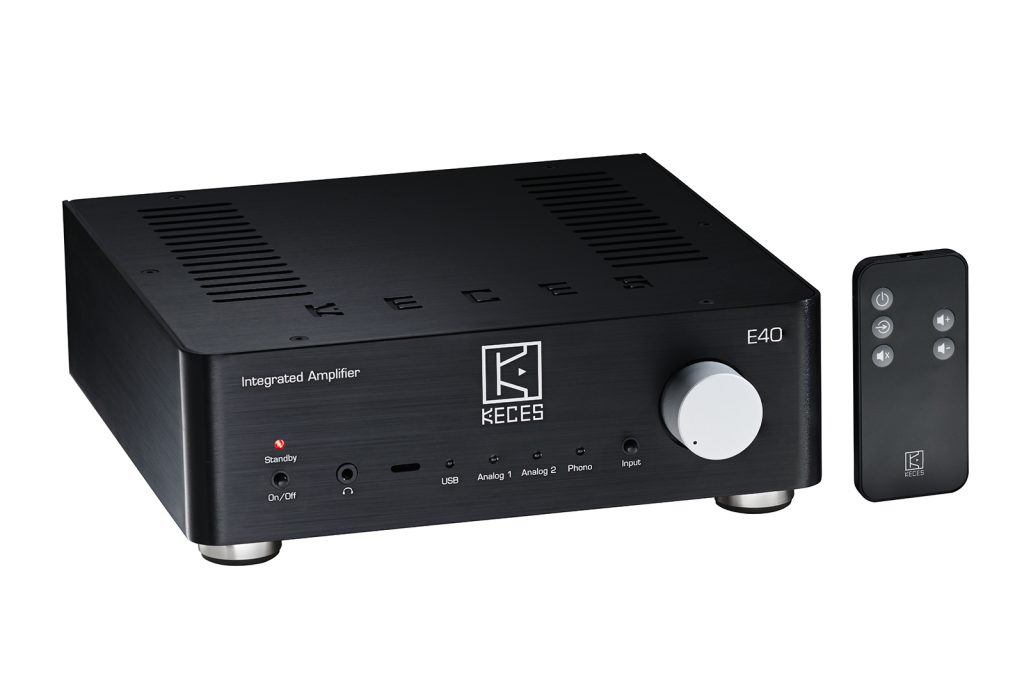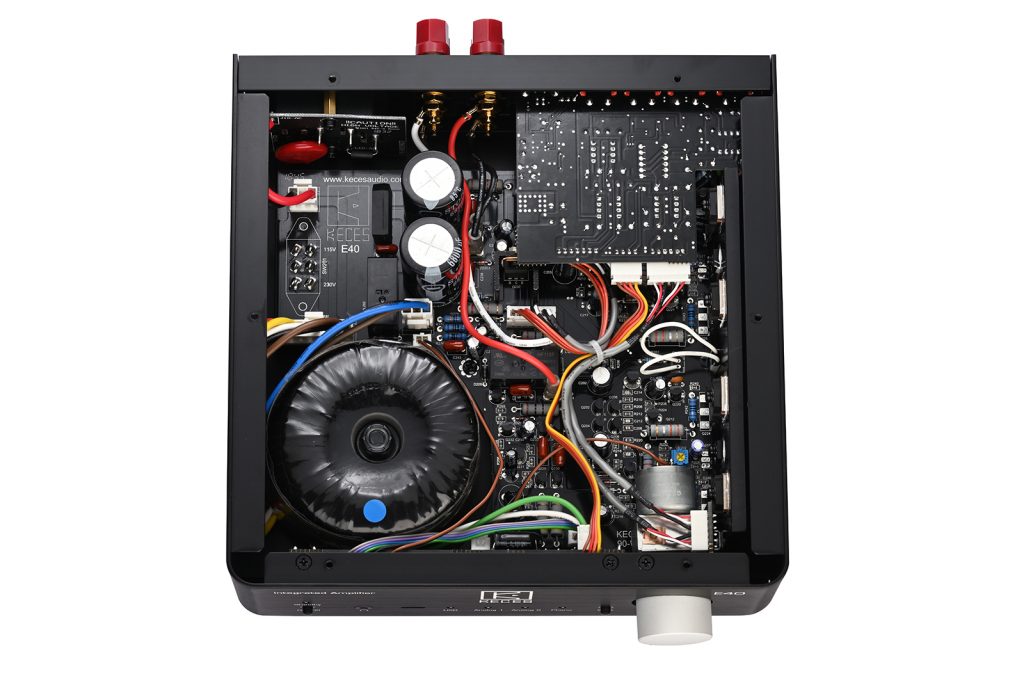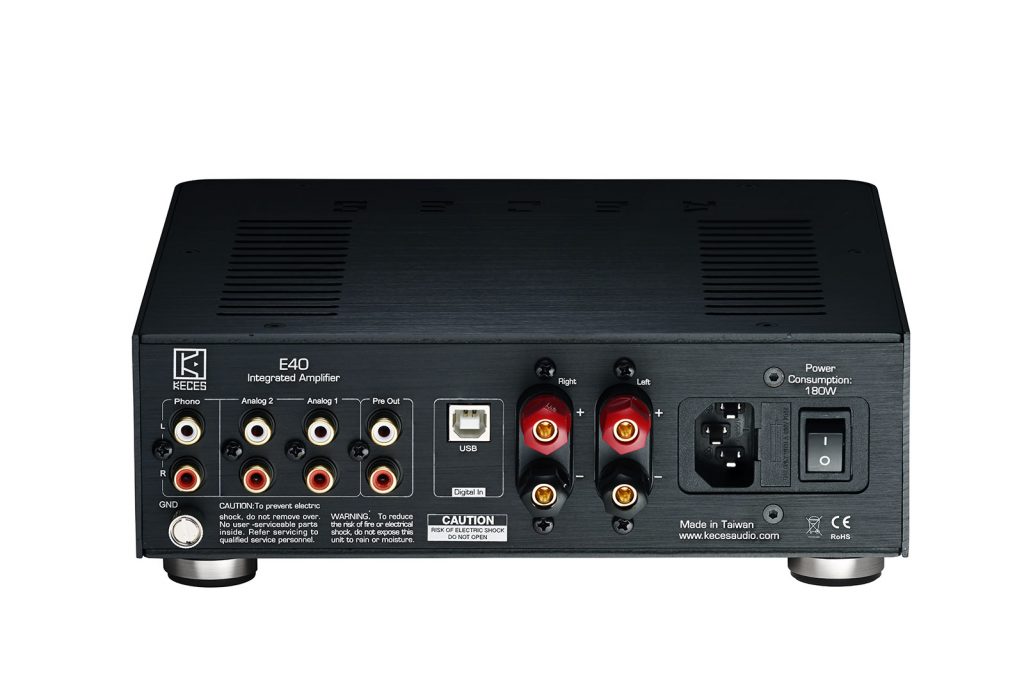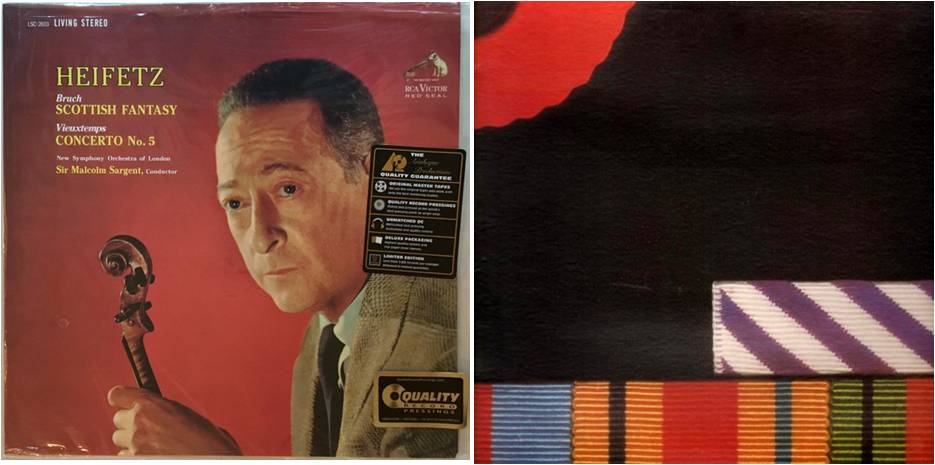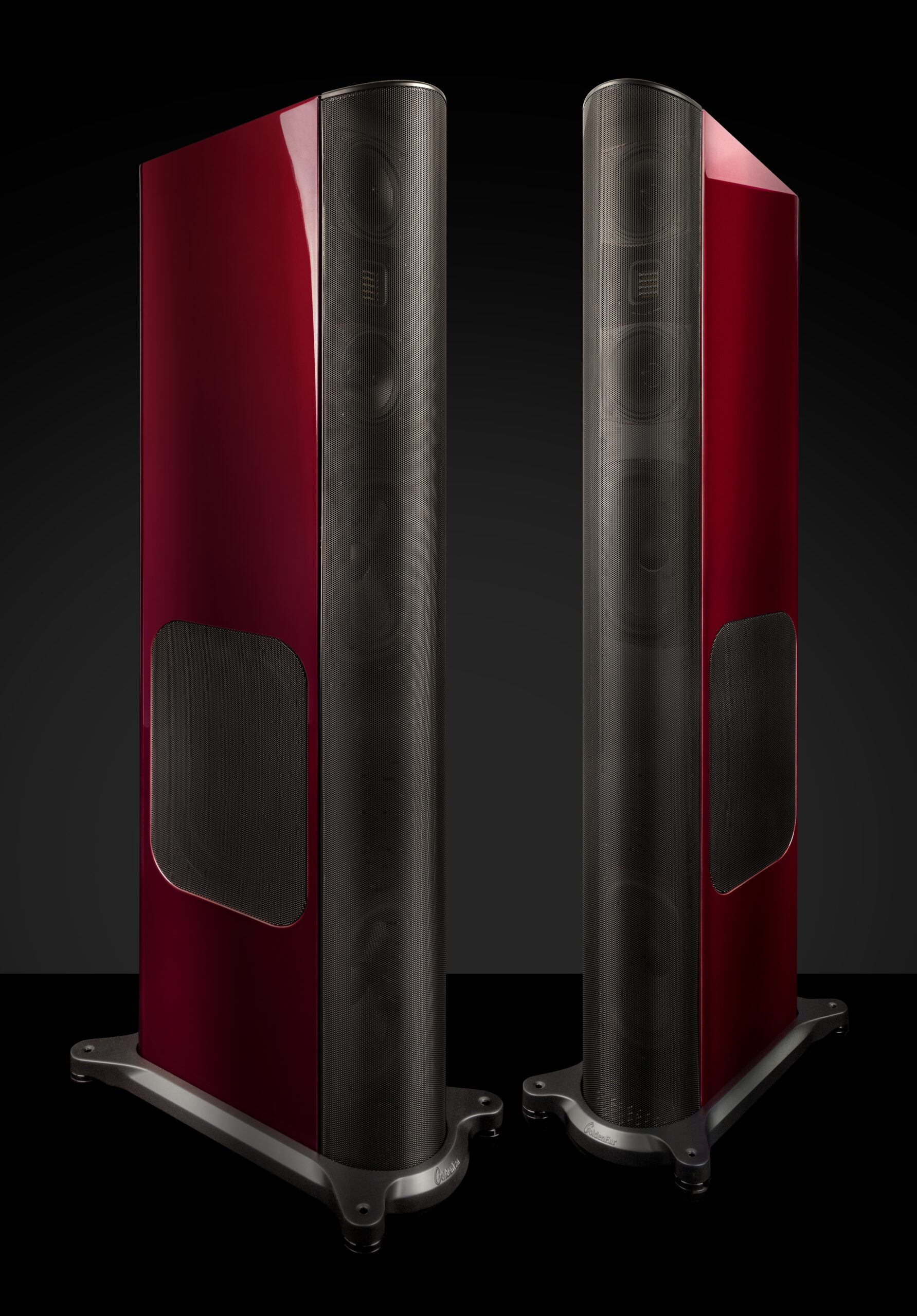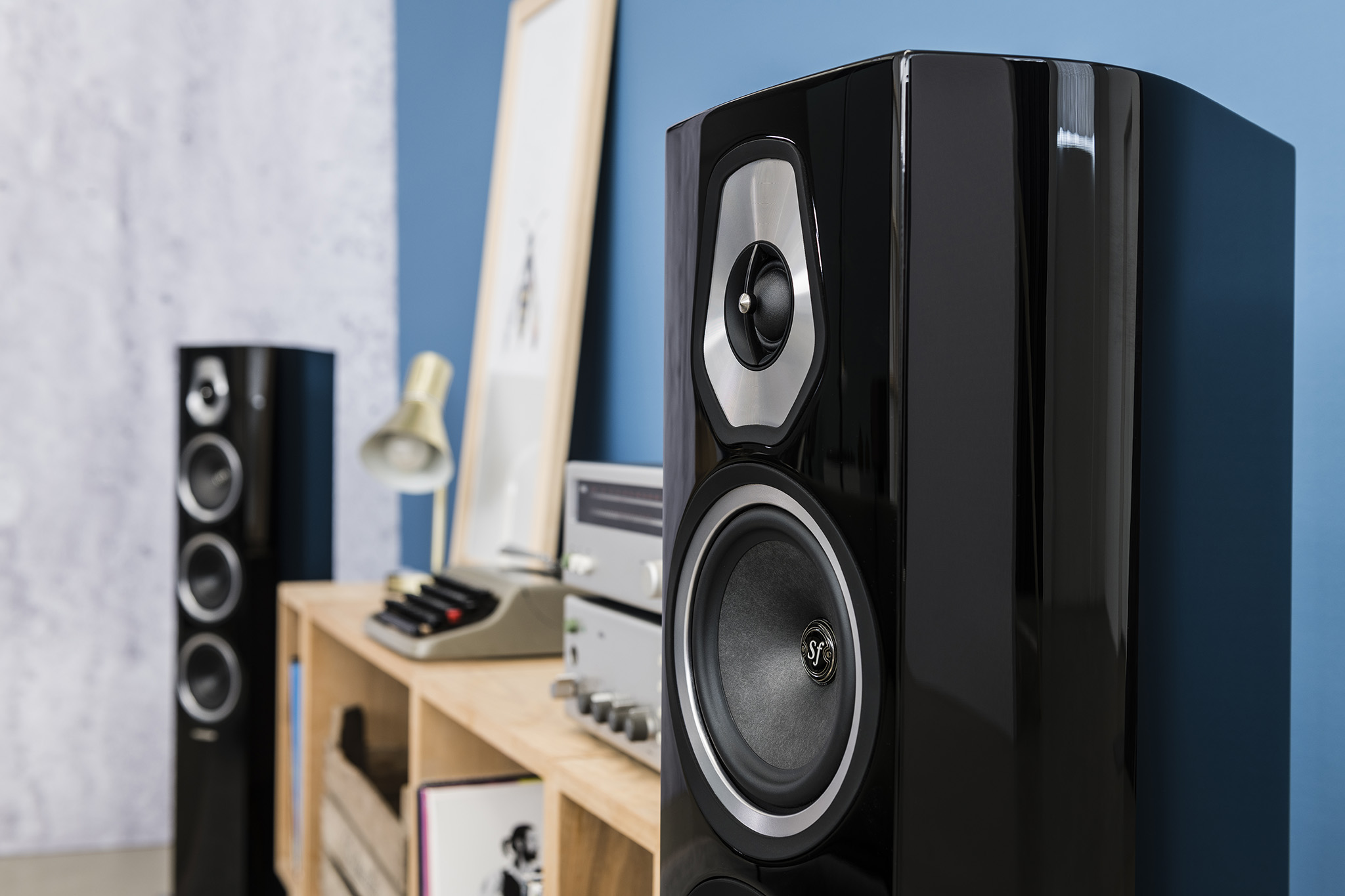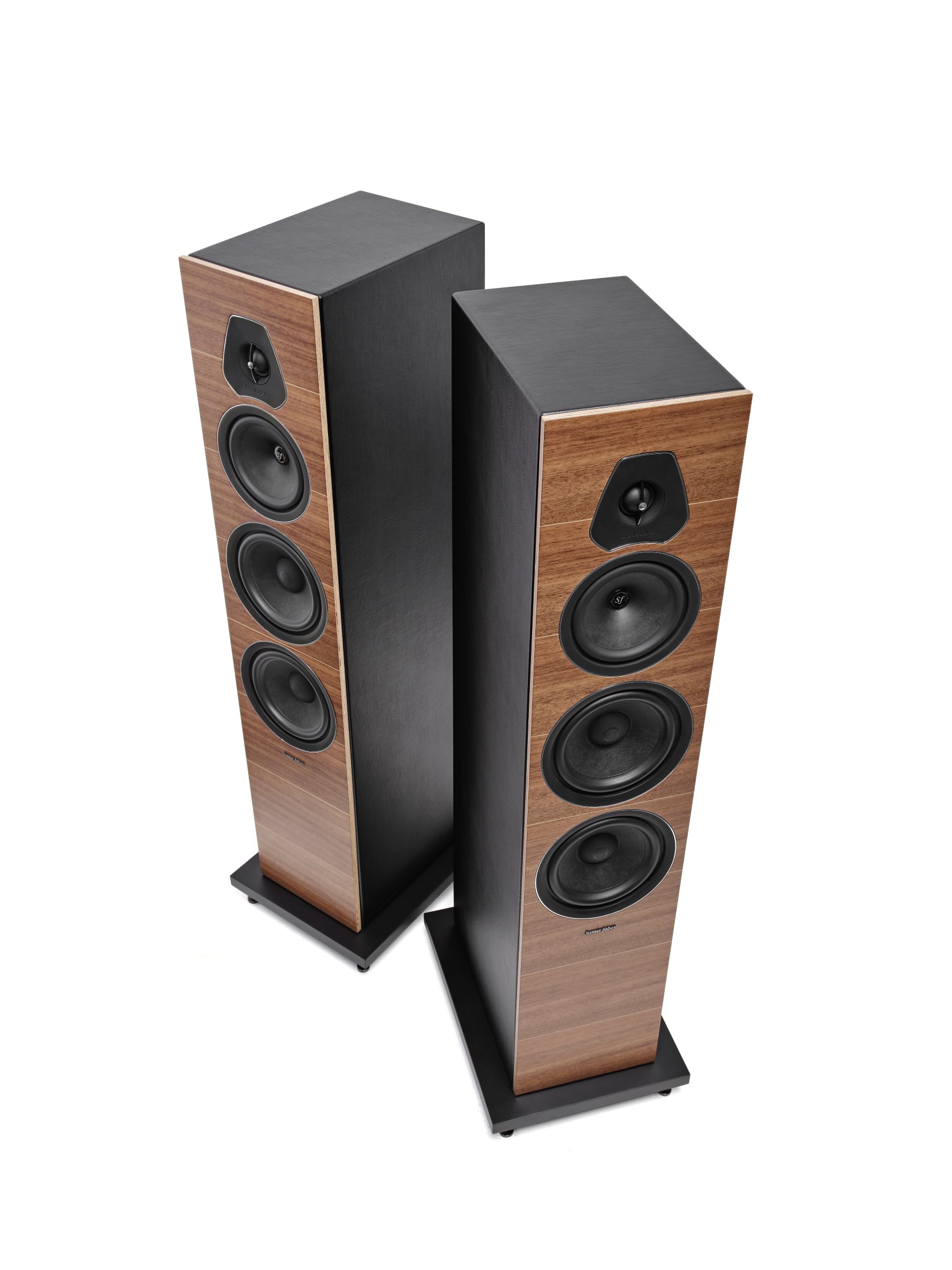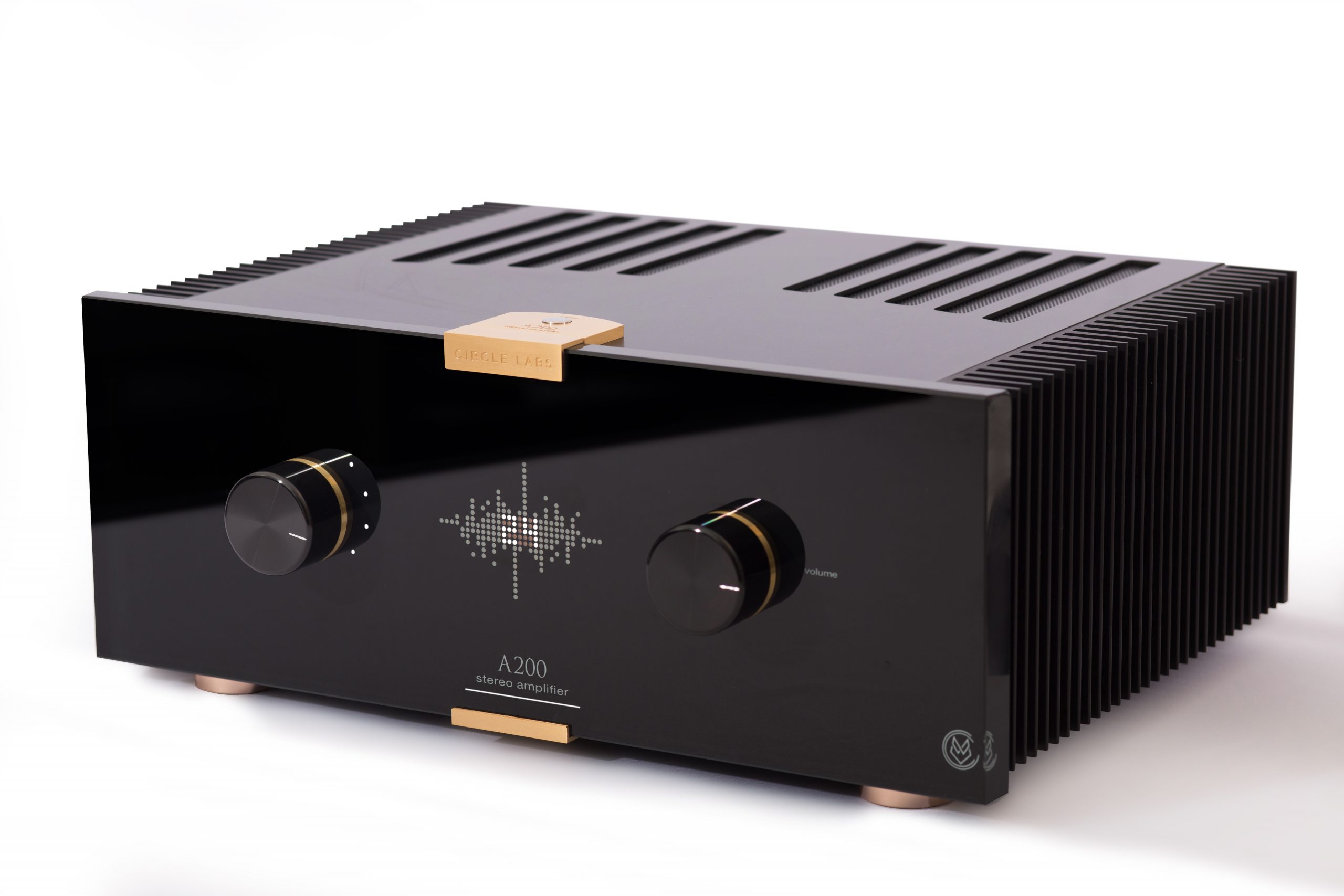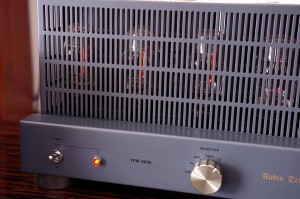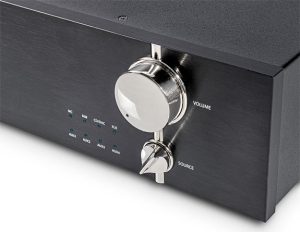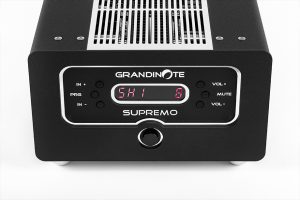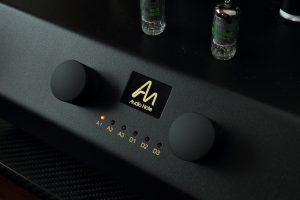It is no secret that the United States HIFI market is so densely packed it is approaching a singularity. If that gravity was not enough to pull a manufacturer into spaghettification, lets add in all the hobbyists and DIY-ers clamoring to fabricate something for pennies on the dollar, so they can revel in their David verses Goliath story, while soaking in some music with their friends!
Why bother bringing a new product here anyway? The simple answer is: When you have been working tirelessly on the design and engineering of specialty audio products, as KECES has since 2002, the result is above the noise of the marketplace and into the music where it belongs. KECES has brought something special to the table with the E40 integrated amplifier, providing a rare glimpse into High-End sound at the $599.00 price-point, and that is worth some investigation.
Why You Should Know About KECES
Key components/Elegant Design/Cutting-Edge Technology/Excellent Acoustics/Superb Quality. While that may be their name in long-form, we will simply stick with KECES. Any company that has thrived and expanded for seventeen years has to exemplify the very qualities KECES thinks are so important that they chose to put them in their name.
All of the design and engineering for the E40 is done in-house. With the myriad of design houses out there, and the extreme accessibility of pre-fabricated amplifier/preamplifier/phono/DAC circuit boards, it is easy to build (in a similar manner as a Lego toy) your own integrated amplifier.
Yet there are those, like KECES, who take the time to sort the wheat from the chaff and work within existing principals of circuit design and component design, and painstakingly select each component with a single-midness to provide the highest quality sound at the most reasonable price-point they can. This thorough exploration of the rabbit hole is the very difference between "just" engineering, and real design. It is also what separates the signal from the noise, breaking the E40 out of the price-point scrum.
The build-up here has been to emphasize that KECES, at least with what is found in the E40, is a legitimate audio contender. They are firmly grounded in the principals of audio engineering, with years of study into how to deliver a product that delivers true High-End performance reliably, and accessible to all.
True High-End, Huh?
Any sound-minded audio enthusiast would be skeptical at this point, so let's get to what matters. First, the E40 comes in a noise-rejecting, handsomely finished aluminum chassis. No stamped steel here. The one-half sized chassis measures in at 8.66 inches x 8.66 inches x 2.59 inches. There are two analog inputs, a phono input, pre-outs for connecting a subwoofer (no crossover), a USB-B digital in, and two pairs of better-than-average 5-way loudspeaker binding posts. The included remote will remember your favorite volume position, and is adequate in function.
Inside you will find a linear power supply (power supply design is one of KECES' specialties) mated to a discrete amplifier stage, a DAC capable of 48kHz/16-bit playback, and a 47K ohm moving magnet phono stage. According to KECES, there is an exceptional headphone amplifier as well, however it was not utilized. On a personal note: it may be high time to pick up some good cans!
While on paper the DAC in the E40 lacks outright capability, it is still more of a DAC than that which comes with the Music Hall A15.3, but less than that of the 192kHz/24-bit capable Denon PMA 800-NE. A small amount of further research will clog the pipe with all sorts of integrated amplifiers hovering around the E40's $599.99USD price that provide anywhere from more rated power to less rated power, but a greater quantity of features.
What will not be found in many of the E40's competitors is in the numbers. The E40's large power bandwidth (5Hz-100kHz), extremely low distortion (0.008%), and high signal-to-noise ratio rated at 110dB (82dB phono) provides proof of a thoughtful 50-watts into 8 ohms and 65-watts into 4 ohms.
Unlike the numbers, how we define things is subjective and open to interpretation. For reference we need to have a way to make things understandable so we can all navigate our way to the greatest amount of musical enjoyment possible. In this spirit, let's differentiate the sonic difference between "HI-FI," and "High-End," at least to the degree that has helped this columnist navigate the audioscape though the years.
The subtle, but all-important difference between HI-FI and High-End boils down to a single word: sophistication. Sophistication is the ability of a system to unravel, though a myriad of complex variables, not just the artists message, but how they are making their message musically. This is the feeling of weight applied to the keys of a piano, minor changes in the pressure of the air used in a delicate vocal passage, and even an acoustic window into how the recording engineer brought it all together to create the work of art the listener is enjoying. In its highest form, sophistication from an audio system is rare and transcends simple gross resolution, output capability, tubes vs. solid state, digital vs. analog, and creates a sense of intimate realism.
Sophistication is not associated with price. There are many house-priced systems out there that are little more than boom boxes with ultra-etched resolution. However, there is a certain amount of engineering, quality, and musical understanding to get a sophisticated sound from any component, or system, and that does help populate the cost column.
In steps the KECES E40, providing a sense of sophistication that did not seem possible at a price-point where most manufacturers are struggling to make pieces that meet even HI-FI sonic quality.
The sophistication provided by the E40 is not without an asterisk, however, because at $599.99 you cannot have it all. Ultimately this may matter little since the E40 builds its value by providing all that may be needed for a small dedicated music system or secondary system.
Time to Listen
The KECES E40 was used with a pair of two-way monitor loudspeakers on stands that have a 6.5" woofer, and a small three-way loudspeaker with dual 5" woofers. On the front end, the analog inputs were tested with a Jaton CD1000B CD Player connected with MIT 330 Shotgun interconnects, and the USB was tested with a smart-phone connected to a music server running J-River Media Center. A trusty Rega P1 with a Rega Carbon cartridge provided the vinyl source.
The first CD to spin was Selmasongs: Music from the Motion Picture Soundtrack 'Dancer in the Dark.' This is the kind of movie you only watch once, and unlike many movies that leave the viewer with movie magic in their hearts, Dancer in the Dark was not afraid to capture the raw emotion of life. It's hard, tragic, and beautiful all at once.
The Icelandic singer / songwriter, and powerhouse vocalist Björk, scored the soundtrack, and was so moved by the concept of the movie, she insisted on playing the leading role. While Björk typically spans the genres of Thrash-Electronica, Trip-Hop, and Alternative, she composed a beautiful overture for the movie. "Overture" is comprised only of the horn section of a classical orchestra, with quiet tympani accompaniment. Clearly influenced by her background in electronic music, the negative space (silence) is as important as the complex harmonics structures the orchestra creates. The result is eerie, harmonically challenging, and was captured by the KECES E40 brilliantly.
There have been amplifier / preamplifier combinations well into the thousands that cannot separate out the orchestra and capture the subtleties of this short, but moving piece of music, but that did not seem to bother the E40. It captured the beauty and subtleties of "Overture" with a nature true to the music, all while maintaining acceptable dynamics and a neutral tonality. And it was quiet. The sheer depth of the background allowed everything to form and dissipate appropriately, and the solo trumpet rang through with a wonderful sense of position in the soundstage and integrity to the instrument. All stripes typically not pinned to the lapel of a $600-class integrated amp.
Ok, fine, so what of everything else? "New World" is a reprise of "Overture," and is the caboose of Selmasongs. It seems this is what Björk was truly envisioning when she wrote "Overture," and perhaps in a chicken-and-egg manner "New World" came first (I am unsure of this, while I researched I could not find any hard evidence of it). Taking "Overture" and adding an electronic beat, along with Björk's haunting, yet powerful vocal ability, "New World" comes to life. The E40 handled the driving beat well while Björk's voice hovered above the music as a whole, clearly defined, with body and texture that provided a sense of realism. It was a sophisticated task that the E40 was able to portray generously.
Anything can happen one time in a row. A company can make a single good product out of a whole line, an artist can be a one-hit wonder, and so moving forward the E40 needed to assure all of the complex ability it was displaying was consistent.
In steps Breathe by the Steve Langone Trio. Steve Langone may not be well known in the wide world of jazz, but this drummer's music speaks to the importance of getting out there and experiencing NEW music: a highly recommended collection builder for jazz fans that want the preservation of classic jazz as defined by the greats of the past, while adding a flare of modernity without the oppressive overplaying. Breathe was released in 2017 produced by Whaling City Sounds, and can be picked up through their website www.whalingcitysound.com.
The E40 took this high-shined studio recording and just resolved the ever-loving mother out of it! In a personal favorite, the waltzy track "Fifteen," the E40 held its sophistication as found in Selmasongs with aplomb. The left-hand of Kevin Harris's piano playing was especially enjoyable, and instead of sounding like the typical harmonic growl of 4ths and 5ths that build a foundation for the dancing right-hand, the interaction between the notes was highly preserved. David Zinno's bass was confidently footed as well while it followed the piano's left hand quite a bit in this piece.
Steve Langone's drumming, that ranges anywhere from sitting so far back on the beat it is about to fall off, to dynamic and ever-changing delicate speed, was also preserved in its entirety by the E40. This was also about the time when I began to feel the E40 was not a "big" 50-watts. The feeling crept in at a level slightly higher than what I normally listen at, but brought in a feeling of shaky-legs on the E40. Strange analogy, but "running out of steam" or "absolute limit," just did not / does not explain the feeling of tiredness, as the E40 seemed to feel more like a distance runner at mile 25 of a marathon, rather than possessing the audible signatures of a power-supply giving in or amplifier clipping.
Even with the 4 ohm small tower loudspeakers the E40 fared in a similar manner. This shows that when dropping to a 4 ohm loudspeaker the E40 does not lack current or drive capability, but the rated power change from 50-watts to 65-watts does not really amount to a hill of beans.
The tendency to proceed quietly into the night is also a testament to a well balanced design, and in the large listening space it which it was used, much larger than one would use a piece like the E40, it never fell short of producing music at levels that were satisfying. That said: For $599.99, something has to eventually give...
And since KECES was not going to give when it came to the quality of the internal Digital-to-Analog converter, they did give in its capability. The DAC in the E40 will only support up to 16-bit / 48kHz resolution. Uncurl that upper-lip; in context of what the E40 is, it would be more than enough for most since the sonic quality of this DAC was on-par with, though less format capable, of that in the Parasound P6 (Issue 106) and the Jaton CD1000B.
It was surprising, yes, since thus far the experience with inexpensive DACs crammed in inexpensive integrated amps often proves to be fairly lack-luster. Most times, the integrated DAC feel like an afterthought, and they wind up about as sonically capable as the CD players from the 1980s JC Penney house brand: The "MCS Series."
In contrast, the high quality DAC in the E40 quickly became apparent while listening to Harry Connick Jr.'s We Are in Love. The strings in "Drifting" were romantic and engaging while keeping their integrity as stringed instruments. Harry's voice also had all of the throaty texture that makes it so spectacular.
"A Nightingale Sang in Barkley Square" was also another favorite. The bass had poise and sufficient weight, all while the tipsy Saxophone was presented with a well preserved throat and bell. There is a small crescendo that leads up to Harry and the saxophone harmonizing, and the E40 presented the intended effect without losing the integrity of either voice or instrument. The background was quiet, and extension effortless. It would be hard to ask more from a stand-alone DAC at $599.99, let alone the DAC inside of an integrated amplifier.
KECES is nothing if not consistent with the E40. The phono stage will only accommodate a moving magnet cartridge with a 47k ohm impedance, but it sounds fantastic! The excitement is well warranted as when compared again with the phono stage in the Parasound P6, the little phono-stage in the E40 was preferable, if only by a narrow margin. To be sure of this result, the output of the Parasound P6 set to 80% maximum volume, was put through the KECES E40. Doing so assured the use of the E40's line stage and amplifier in an attempt to minimize variables.
The overall sonic presentation was surprisingly similar between the E40's phono stage and the P6, however the E40 seemed a bit more resolved. This effect may have been due to the interconnects between the P6 and E40, but no less was the cause of the E40's phono capability being declared the winner.
The sophistication of the sound-stage, resolution of music, and surprising dynamics presented by the E40 with Pink Floyd's The Final Cut (Colombia QC38243) made the listen as enjoyable as on any other system, large or small. Erring to politeness, the E40 was "one-click" toward warm in its tonal balance, though possessed enough resolution and extension to not feel as if it was rolled-off. The low frequency response was weighty and though the E40 did not have ripped abs, its mid-section was flat and attractive.
While this was wonderful, the E40 does not seem to "rock." The small tower loudspeakers are 89dB efficient; however the E40 was always polite and well-composed, even when it was not desired. As "The Gunner's Dream" builds toward the bluesy instrumental dominated by a solo saxophone, a little more impact would have rounded-out the rest of the incredible sonic character of the E40 nicely. As with its lack of format capability on the digital side, this was a forgivable trait of the E40 considering its ability to sort out the music while keeping the integrity of the instrumentation.
The E40's integrity continued through the subtle background information and dynamic "pops" in the music while listening through "Southampton Dock" and "The Final Cut." Feigning sonic benevolence also paid off while listening to Scottish Fantasy-Concerto No.5 (RCA LSC-2603) featuring Jascha Heifetz as the soloist, and the New Symphony Orchestra of London, Sir Malcolm Sargent, conductor.
Originally scored in 1880 by Max Bruch, and dedicated to the violinist Pablo De Sarasate, the movements of Scottish Fantasy are built upon Scottish folk melodies, paying homage to Scottish tradition. This imagination of Scottish Fantasy is moving, and the E40's sophisticated way of sorting out the subtle details of Heifetz's finger work while preserving the presence of the orchestra, made the listen a moving experience.
With this orchestral piece, the E40 drove both sets of loudspeakers to satisfactory, though not to full-scale levels. It is notable that the E40, while playing dynamic music for extended periods, does get fairly warm. It was never enough to be alarming, but enough that warrants the recommendation to keep it adequately ventilated.
Recommendations and Conclusion
KECES has created quite the value proposition in its E40 integrated amplifier for $599.99. It has an affordable price-point combined with adequate capability and a sophisticated sound that is usually only available at many orders of magnitude higher of a price-point. The E40 is perfect as the foundation of a second system for a music lover who wants the same integrity as their primary music system, but does not want to break the bank or purchase a myriad of separate components.
More importantly, the E40 would make an excellent "one-box" solution for someone who is dipping their toe into high quality music listening, someone who has a small space, or in an infallible desktop system. For many the E40 can get a music lover off the merry-go-round of trying every affordable integrated amplifier under the sun in desperation to approach the same sound quality of a true High-End system.
Since you cannot have it all for $599.99, it seems KECES has chosen to give their customers an integrated amplifier focused on quality rather than quantity. No, the E40 does not support high resolution digital formats, the phono stage connectivity is a one-trick pony, and it does not seem to be able to all-out rock, but for the love of all that is good, the E40 can reproduce the music! Is that not what counts?
To KECES it does. To the US marketplace it should, and to anyone looking for real High-End sound at an affordable price: it will. The KECES E40 can be purchased through their distributor's website. It was an absolute pleasure and refreshing surprise to have the KECES E40 in for evaluation. The E40 puts to bed the notion that a flooded marketplace produces little more than shades of grey, and that there are real companies out there, doing real work to truly bring High-End sound to everyone.
KECES, a division of HUIKANG ELECTRONIC CO., LTD.
1F., No.2, Ln. 313, Sec. 6, New Taipei Blvd., Taishan Dist.
New Taipei City 24355
Taiwan
+886.2.2901.1018




